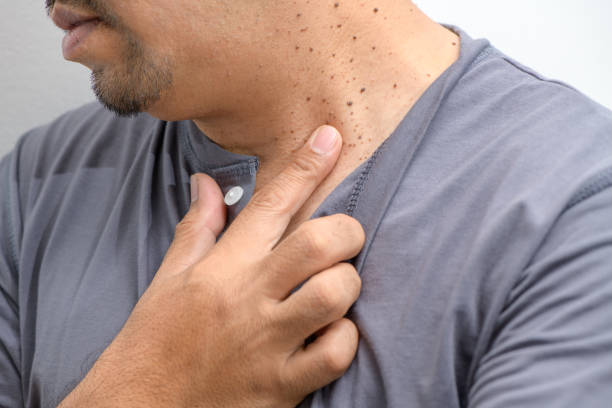How to Remove White Skin Marks without a Scrub or scrubbing
The natural oils in your skin, as well as controlled production of sebum, capeskin clear. When the sebaceous glands produce excess oil, they produce whiteheads and blackheads. White Skin Marks When they don’t produce enough oil or sweat to keep the skin hydrated, they produce redness and pimples. The natural oils also help keep bacteria at bay, which is why you get less acne on these “scrubs days” than you do on normal days. If there are too many bacteria on a scrubbing day (and this happens more often than you think!), it can lead to acne breakout on other “clean” days (and vice versa). Unfortunately, most scrubs dry out the skin and cause it to become flaky and irritated. Try these tips for removing white skin:
Scrub while skin is still damp
Some scrubs have a drying agent in them that makes the skin more likely to produce excess oil. On these scrub days, use a gentle cleanser while scrubbing. Don’t use a cleanser with too much of a “ scrubbing power ”—you want to be gentle while still getting the job done. Some cleansers with “gentle” in their name are not gentle enough. Try these tips for removing white skin while it’s still damp: – Use a non-greasy cleanser – Use a cleanser that has a low PH (pH level) – Use a medicated or foaming cleanser – Use a gentle foaming cleanser – Use a foaming or gel sceptic cleanser – Use a non-foaming, non-medicated cleanser – Apply a light moisturizer after cleaning – Follow up with a oil-free moisturizer.
Read More: How to Take Care of Your Oily Skin
Don’t use too much soap
Using soap on your skin can be a delicate balance, especially when it comes to maintaining skin health and preventing acne breakouts. While soap is essential for cleansing away dirt, oil, and impurities, using too much or choosing the wrong type of soap can have adverse effects on your skin.
Soaps containing “soap-like” ingredients, such as sodium lauryl sulfate (SLS), can disrupt the skin’s natural balance by stripping away its natural oils. This can trigger a compensatory response from the skin, leading to an overproduction of oil, which can clog pores and contribute to acne breakouts and blackheads. It’s essential to be mindful of the ingredients in your soap and opt for gentle, non-comedogenic formulations whenever possible.
For those with acne-prone skin, using a minimal amount of soap is advisable to avoid exacerbating existing breakouts or causing new ones to form. While cleansing is essential for removing surface impurities, excessive use of soap can strip the skin of its protective oils, leading to dryness and increased vulnerability to acne.
Moreover, excessive scrubbing or aggressive cleansing techniques can further disrupt the skin’s natural barrier function, leading to irritation, inflammation, and an increased risk of flakiness. Instead, opt for a gentle cleansing approach, using mild, non-abrasive cleansers and avoiding harsh scrubbing motions that can cause damage to the skin’s surface.
In addition to being mindful of your soap usage, it’s essential to follow up with appropriate skincare practices to maintain skin hydration and balance. After cleansing, be sure to moisturize your skin with a lightweight, non-comedogenic moisturizer to replenish lost moisture and support skin barrier function.
Ultimately, the key to healthy skin lies in finding the right balance between cleansing and preserving the skin’s natural moisture barrier. By using soap in moderation, choosing gentle formulations, and adopting a gentle cleansing approach, you can help to keep your skin clean, balanced, and free from acne breakouts.
Make the scrub gentler
When you use a scrub every other day, it’s easy to accidentally over scrub. Scrubs should be gentler than a washcloth, yet still give the skin a good exfoliation. You don’t want to make the skin too sensitive, though—over exfoliation can lead to redness and irritation. Try these tips for making your scrub gentler: – Use a mild scrub – Use a combination of cleansers – Don’t use a scrub every day – Follow up with a oil-free moisturizer
Don’t over exfoliate
Exfoliation is a valuable skincare practice for removing dead skin cells, promoting cell turnover, and revealing smoother, brighter skin. However, like many aspects of skincare, moderation is key, and over-exfoliation can have detrimental effects on your skin’s health and appearance.
When you over-exfoliate, you strip away not only the dead skin cells but also the protective barrier that keeps your skin hydrated and healthy. This can leave your skin vulnerable to damage from environmental aggressors and more prone to irritation, inflammation, and sensitivity.
Moreover, over-exfoliation can disrupt the skin’s natural balance, leading to excessive dryness and flakiness. When you remove too many layers of skin too frequently, it can take time for your skin to replenish itself, resulting in a compromised moisture barrier and a dull, lackluster complexion.
To avoid the pitfalls of over-exfoliation, it’s essential to exfoliate no more than a few times per week, depending on your skin type and the type of exfoliant you’re using. Opt for gentle exfoliants with fine particles or chemical exfoliants containing ingredients like alpha hydroxy acids (AHAs) or beta hydroxy acids (BHAs), which dissolve dead skin cells without causing irritation or damage.
After exfoliating, it’s crucial to follow up with a light moisturizer to help rehydrate and soothe the skin. Look for oil-free or non-comedogenic moisturizers to prevent clogged pores and further exacerbation of skin issues. Moisturizing after exfoliation helps to replenish lost moisture and support the skin’s natural barrier function, restoring balance and vitality to your complexion.
In summary, while exfoliation can be a beneficial addition to your skincare routine, it’s essential to do so in moderation and follow up with appropriate moisturization to maintain skin health and prevent damage. By avoiding over-exfoliation and adopting a balanced approach to skincare, you can achieve a smooth, radiant complexion without compromising your skin’s integrity.
Don’t use a toner
Some people believe that moisturizing after a scrub makes the skin more sensitive. But this only makes the skin more reactive, and less likely to be cleansed and groomed. Plus, a heavy moisturizer (like a body butter) feels more like a mask and less like a cleanser. Use a light toner after a scrub to help the skin’s natural oils get replenished.
Conclusion
If you have white skin, you’re not alone. White skin comes from a combination of healthy skin and unbalanced skin flora. Both of these factors can be controlled, and white skin can be controlled, with the use of products. If you’re struggling with white skin and want to get it off as quickly as possible, we highly recommend our White Skin Remodeler. It’s the only treatment we recommend for white skin, and it’s proven to be effective for 90% of people.
white cream







